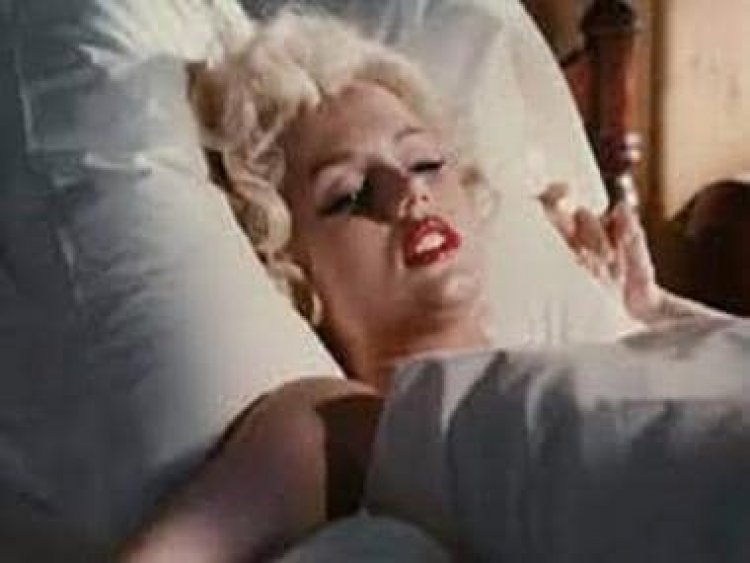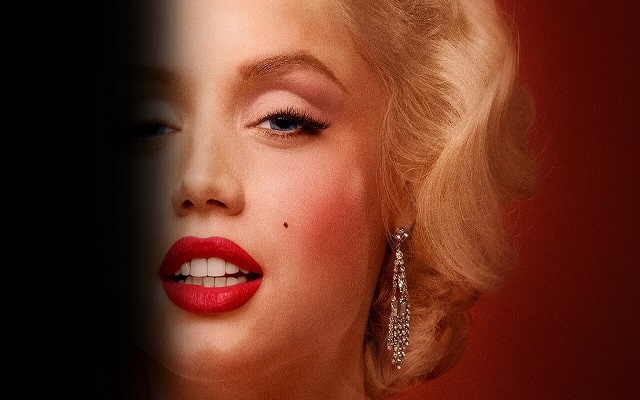The Devil’s Advocate: In defence of Andrew Dominik’s Blonde
The Devil’s Advocate: In defence of Andrew Dominik’s Blonde

In a scene from Netflix’s Blonde, a couple of studio execs discuss the talents of the actress they have just auditioned. “That was pretty bad, wasn’t it? Like watching a mental patient, maybe”, one says before asking his boss, who is coughing up cigarette smoke while standing in the gateway that separates light from the darkness. “Jesus Christ, look at the ass on that little girl,” he says. Andrew Dominik’s Blonde, lead by a stunning Ana De Armas, has proven to be divisive as any account of a personality seen as both illustrious and misunderstood would. A heightened, fairly poetic take on Marilyn Monroe’s rumoured but never quite ascertained life, Blonde has a fair number of trigger points. There’s ample nudity, awkward sex, horrifying abortion sequences and at least two incursions, quite literally, into actress’ vagina. It’s natural then to misinterpret Dominik’s vision as a pornographic reduction of the famed actress’ controversial life when it is also an able, toe-curling homage to the beats of horror, dressed explicitly as Monroe’s life and body.
Blonde, firstly, is not really a biopic because it is based on a book that itself was a fictional account. An imaginary threesome that deliberately places Monroe at the conflicted centre of a film trying to be both respectful and objective, is what makes her life as fascinating as it is impossible to satisfyingly articulate. Monroe’s life, her rise to conspicuous fame has never quite alighted this vehicle of filmmaking where body becomes subservient to crony perception. “What am I, a piece of meat?” Monroe asks loudly while being dragged through the corridors of, what is possibly the White House. Can the fact that Monroe’s objectification preceded her other notable talents really be brushed under the carpet on the account of time, that also wishes to now act as a kind of salve? Possibly not.

On the contrary, Blonde is possibly what a horror film attempting to uncover the messiness of fame that both illustrates and cuts deeper the wound of privilege and possession would feel like. From the dingy, caustic view of Norma Jeane’s childhood alongside a toxic mother to her chilling encounters with the motherhood that almost ‘was’, Dominik scythes the possibility of redemption at the base, prefacing the story with the idea that this is not about our guilty recollections of a once iconic star, but about the franchise of toxicity, some intended, some unintended that itemised a human being into something she herself couldn’t possibly comprehend.
Some of the most breath-taking scenes from Dominik’s Blonde are also some of the most disturbing ones. It’s irrelevant if they echo fact or not, for they are sensorial images of what the creators believe must be a frighteningly shunted life. From panic attacks to soundless rape scenes, there are images in the film that betray the idea of immersion, for this is a world, a life, that continually forces you to view from the edges of make-believe. You never really want to enter this world, especially not on Monroe’s shoulders. Marilyn Monroe for that matter, is a construct that can and has been over half a century, interpreted through competing tones. It could be the story of a tortured girl who rose far too quickly for her own good, or it could be, as Domnik is trying to portray, be the petrifying colonisation of a female body that yielded, unintentionally, to the gaze of the men around her. To yield is to also, become. In this case, the destination is tragedy dressed in the humbling attire of horror that feels richer because it is also unpardonable.
Of course there are debatable choices in the film. The nudity, the threesome that could have been consigned to the book alone for here it becomes a ruse to parade a shallow noir-esque angle to her early relationships. The explicitness aside, Dominik also never quite attempts to ask Monroe the questions that seem to swirl around her in the ocean of her own fame. He does, instead, view her as a stiff incubator for the method and madness that was Monroe and not the moral quandary or the existential dread that would have at some point sent her into the ears of someone akin to a friend – in real life Monroe did have quite a few friends including women.
All that said, Blonde is visceral, the kind of genre film that fails as a biopic but is stunningly evocative of the hellish life that Monroe is often adjudged to have lived. Could this nightmarish vision then really be put together without sidling with the monsters that helped shape the actress’ life that she prematurely escaped. Of course it’s uncomfortable viewing, but the idea that Monroe was more than just a victim makes sense for a film also trying to moderate, or more so balance the scales in the favour of cautious reconciliation. Blonde, instead, is a full-tilt nightmarish vision of a life that really can be imagined with as much whimsy and dread as it was possibly undermined with lust and romance in the days that Monroe was actually alive.
Manik Sharma writes on art and culture, cinema, books, and everything in between.
Read all the Latest News, Trending News, Cricket News, Bollywood News, India News and Entertainment News here. Follow us on Facebook, Twitter and Instagram.
What's Your Reaction?



























































